Poppies (Papaver spp. and cvs., Zones 3–9) are one of the most beloved and desirable garden flowers, but they aren’t as easy to please as many sources make them out to be. While there are those who will claim that they are the easiest flowers to grow since they often self-seed around the garden with abandon, poppies—especially the annual species—remain challenging to grow for many gardeners. Below I’ll go over some common annual and perennial poppy species, some recommended varieties of each, and how to make them thrive in your garden.
Annual Poppies
Breadseed poppy
Papaver somniferum and cvs., annual
Breadseed poppy is so named because the seeds are edible and were traditionally used in baking. It can be one of the showiest plants in the late spring garden, but it is notoriously fickle to grow well. With many varieties to choose from, there are forms that range from large, single blooms that come in purple, pink, or white tones, to those that are so packed with petals that they look like mop heads.
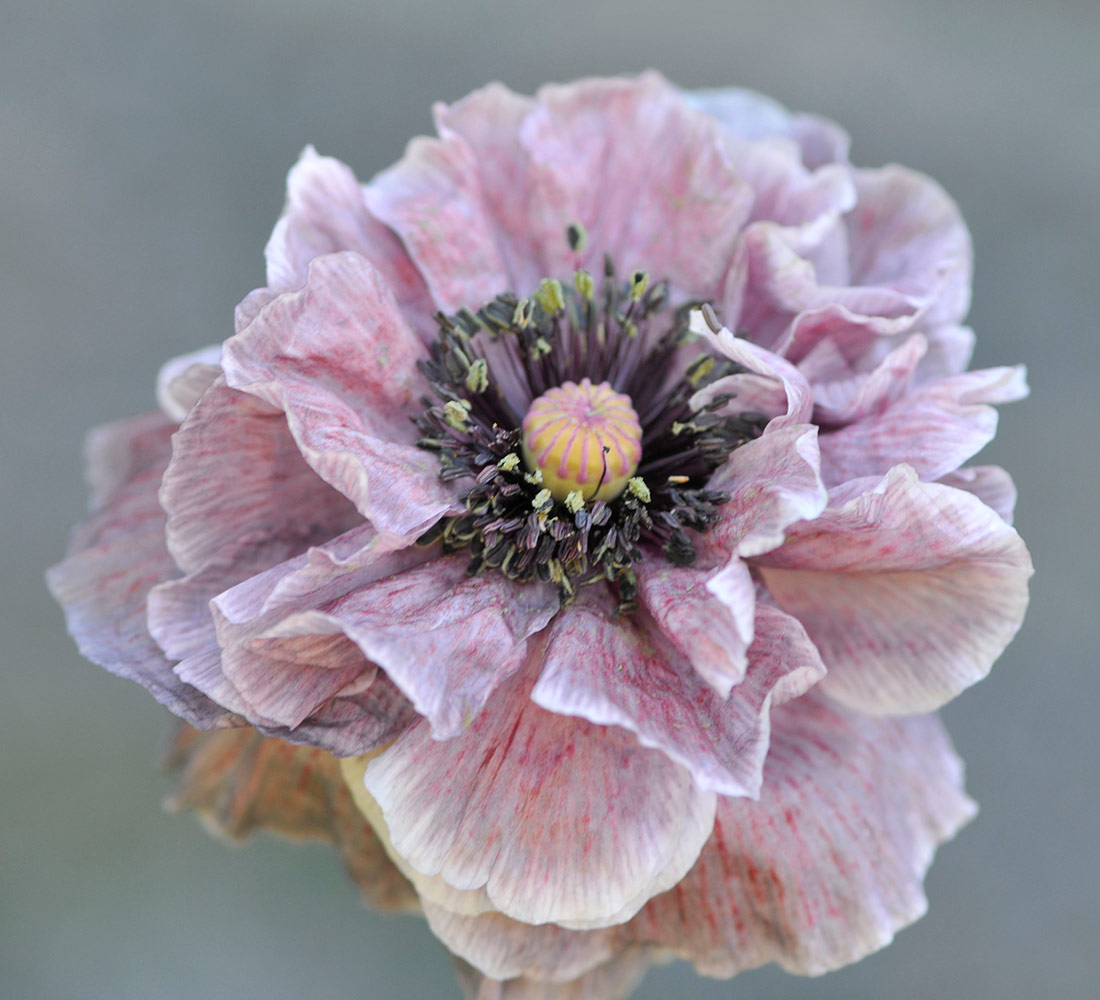
Common poppy
Papaver rhoeas, annual
The other popular annual poppy, perhaps even prettier than breadseed poppy, is the common poppy, also called corn poppy or Flanders poppy. The straight species is orange-red, but there are also many fruity-colored selections. Many of these cultivars were generally made a century ago in Shirley, England, and while they remain beloved in many northern gardens, they are somewhat uncommon today, as they are not commercially viable as a mass-market bedding plant due to their specific requirements (mostly their sensitive needs regarding cool temperatures and avoiding root disturbance).
How to Grow Annual Poppies
Both of these species can be grown successfully in home gardens, but success comes with attention to their preferred conditions and how dedicated you are to caring for the young seedlings. If you are fortunate to have a spot where your poppies are self-sowing, you have already found success, but if your plants aren’t gigantic or flowering well, you might want to tweak your methods.
Both of these annual poppies can germinate in fall, but in our northern gardens the seedlings will not survive our harsh winter weather. What emerges in the spring are seedlings from seeds that remained dormant all winter. So there’s no benefit to sowing seeds in midwinter other than perhaps the fact that snow sowing was a method that gardeners practiced to help seeds find a natural spot in the soil, resulting in natural-looking drift if the stars align. Usually the stars don’t—especially if your garden has been mulched, or if other perennials or weeds grow too thickly.
Here are two proven methods when it comes to growing annual poppies here in the north: (1) direct-sow outdoors in late winter or early spring; (2) sow some seeds indoors under bright lights, and set them outdoors once the weather becomes more mild.
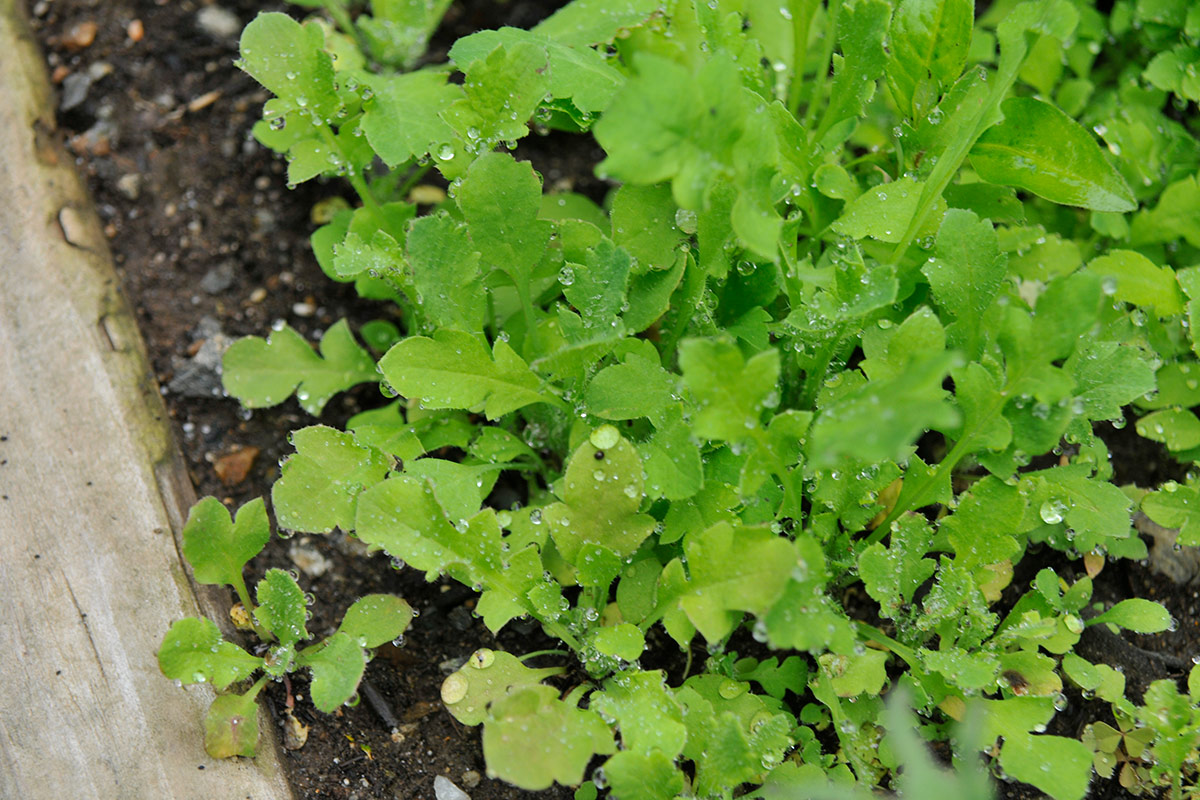
Direct-sowing annual poppies
Direct-sowing seed in late winter or early spring is still the best method for achieving the healthiest annual poppy plants. It ensures that you never have to transplant them, which is ideal because they resent their roots being disturbed. The biggest mistake gardeners make is to sow seed too thickly. Avoiding this is harder than you may think. A good tip is to mix a packet of poppy seeds with a cup of something dry, such as sand or vermiculite, and then to sprinkle the mixture onto the surface of the soil. The goal is to end up with a single poppy seedling every foot or so.
The second greatest challenge is then trying to find those tiny seedlings in spring and identifying them separately from the many weeds that will also be germinating at the same time. Learning to identify poppy seedlings is key to success; baby poppies look a bit like those dried thyme leaves from your roast chicken. Be ruthless in thinning, as this will pay off once plants begin to grow.
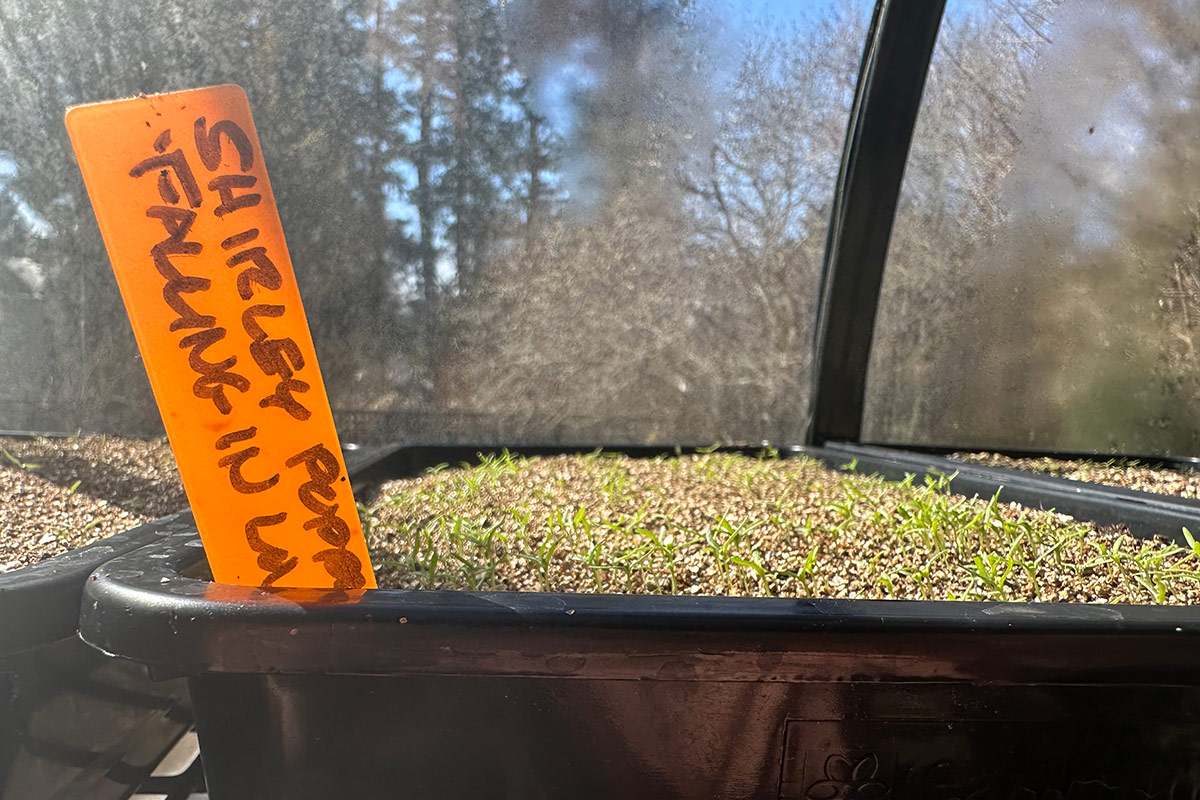
Starting annual poppies indoors
Contrary to what you may have heard, both common and breadseed poppies can be started indoors, but they require unique conditions and are unlike most annuals you may have grown. There are methods that professional growers use, especially those at specialist nurseries and at private or botanic gardens. Begin by sowing seeds (very sparingly) on the surface of a seed mix, cover the seed with 1/8 inch of fine vermiculite (this is still considered surface sowing). Cover the flats with glass or plastic wrap to increase humidity, and set them in a warm place (70° to 80°F) that is very bright (preferably full-spectrum LED lights set close to the flats). Seeds should germinate in two to three days in these conditions. Immediately relocate the flats to a cooler or cold location (45° to 55°F) for the rest of the process, but bright light or sunlight is essential.
These conditions may seem challenging to present, but if one is clever, a light unit could be added to an unheated garage, a cellar, or an enclosed porch. A cool greenhouse or cold frame is the best place.

Transplanting annual poppy seedlings
Transplant seedlings when they are very small, just after the first two cotyledons have opened and as the first true leaf is beginning to form. This may seem too early to handle any seedling, but with poppies, this is the stage when their roots are less likely to be damaged. Success comes from transplanting babies rather than teenagers, because their hairlike roots are still forming.
Transplant each seedling into its own pot—a 3- or 4-inch one filled with potting soil. Grow the seedlings in a cool spot (45° to 55°F), or move them outdoors on mild days; they can even handle a light frost once they have been hardened off for a few weeks in April. Set plants out into the garden in full sun to partial shade with well-draining soil before their roots have filled their containers, or pot them up into larger pots. Avoid allowing plants to dry out, and plant them in large drifts for the best effect.
Favorite Varieties of Annual Poppies
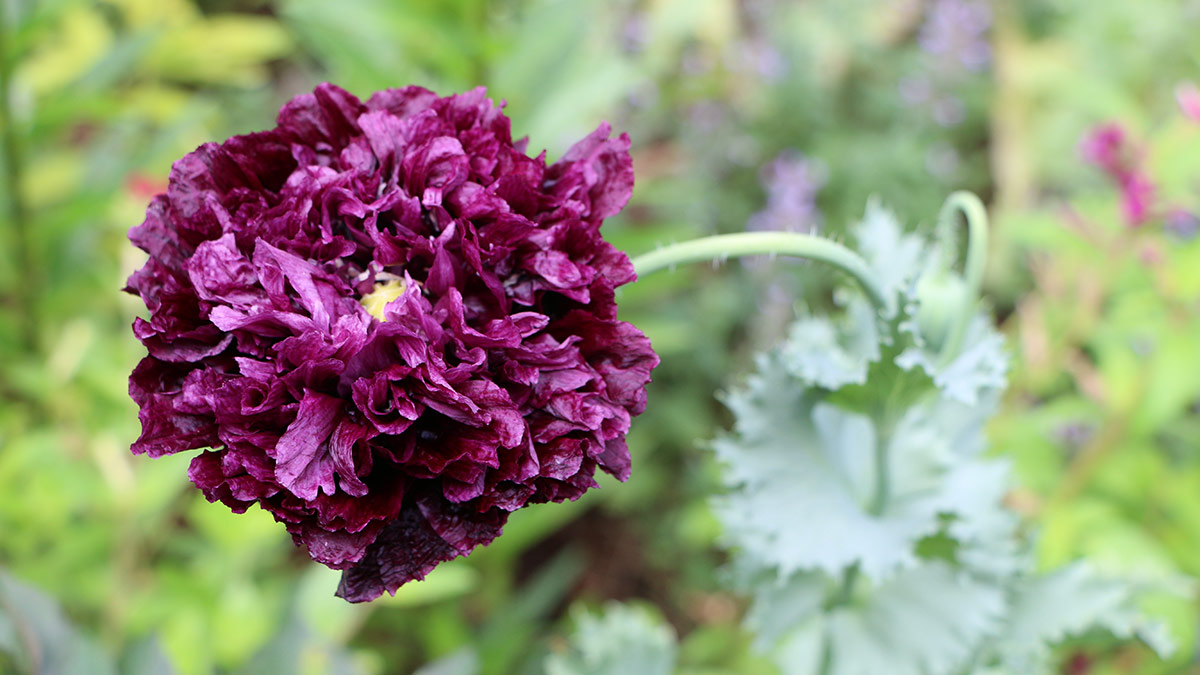
Breadseed poppy varieties
- ‘Lauren’s Grape’ is a popular and desirable rich purple with single flowers that bloom above gray-green foliage. The white stamens are set against dark splotches on the petals.
- ‘Black Peony’ has a form like the other double peony-flowered types but in a deep, plum purple.
- ‘Hungarian Blue’ features large, single flowers that are pale purple. This is one of the best varieties for producing the most flavorful, edible seeds for baking.
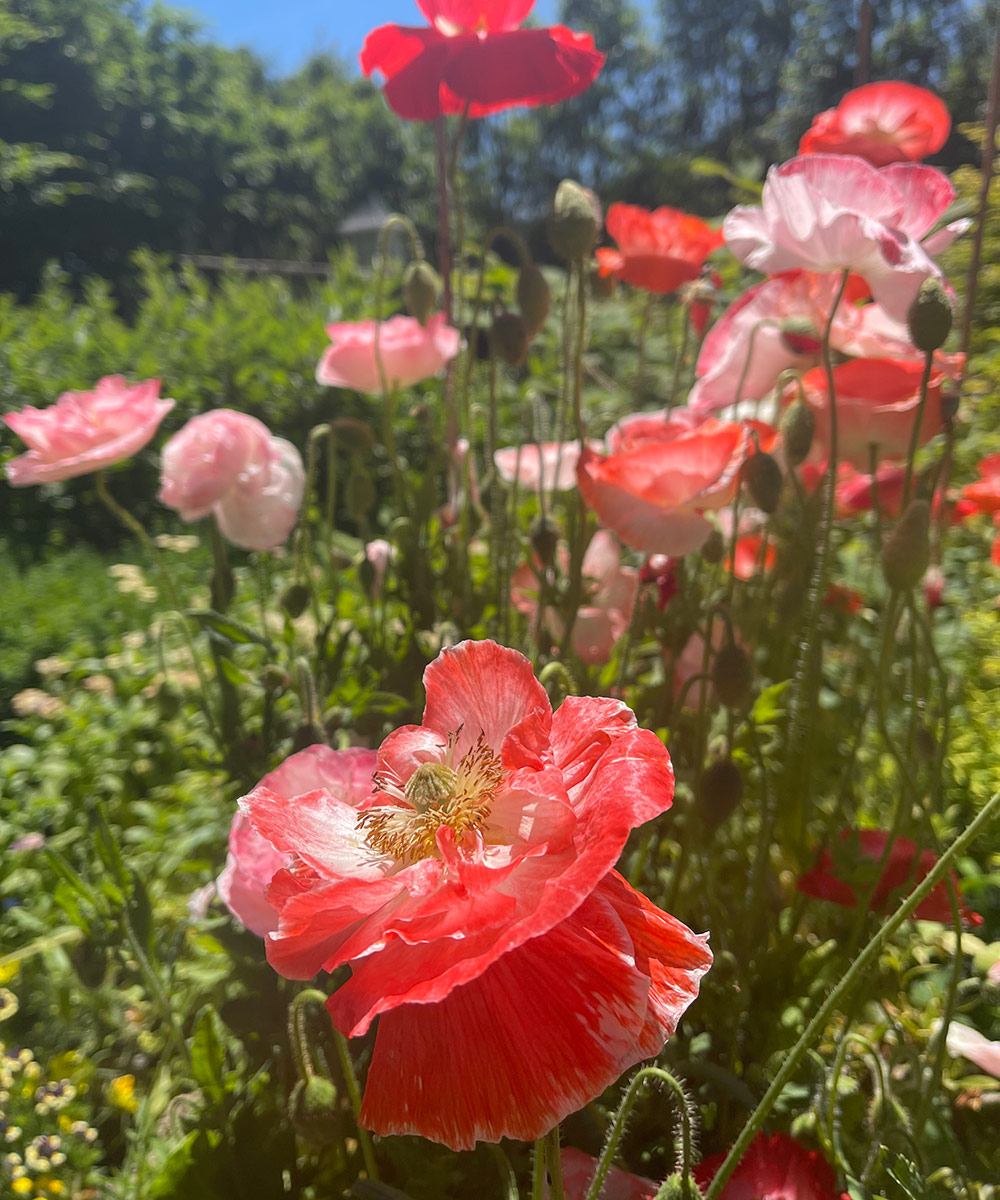
Common poppy varieties
- ‘Falling in Love’ is a semi-double cultivar with twice the petal count compared to other common poppy varieties. The large flowers come in a range of orange, red, and pink colors, including bicolors that are white with blushed picotee edges.
- ‘Amazing Grey’ is like no other poppy—the name says it all. The flowers are truly a smokey lavender-gray.
- ‘Mother of Pearl’ is considered by many to be an improved version of the original ‘Sir Cedric Morris’, a lost strain from the early twentieth century. Regardless of its origin, this mix is lovely and includes many unique dusky, silvery, and smokey shades, many layered over an ivory base color.
Perennial Poppies

How to Grow Perennial Poppies
Perennial poppies are quite different from annual species. Most are long-lived, heritage plants—particularly oriental poppy (Papaver orientale, Zones 3–8)—especially here in the Northeast where we can offer them the conditions they love. These poppies prefer full sun and can grow well in different soil types but prefer good drainage.
Oriental poppies are a bit like peonies (Paeonia spp. and cvs., Zones 3–8), as they also resent being moved. Their thick taproots prefer to stay in place for decades; that said, it’s best to start with established plants and to site them mindfully with few neighbors, as they prefer to have their personal space. This is why many New England farmers keep them in the vegetable garden, where they can be treated like rhubarb and other perennial crops. If you grow them isolated like this and with plenty of room, rich soil ,and full sun, you’ll be rewarded with loads of blooms in June.
If you choose to raise oriental poppies from seed, know that it isn’t difficult but that it’s also not particularly practical because it takes years to achieve blooming-size plants. Buying established plants from a nursery, preferably ones already growing in their nursery pots, is often a wiser idea. There are many hybrids from which to choose, with colors like salmon, pink, and red, though the orange varieties tend to be more vigorous.
Favorite oriental poppy varieties
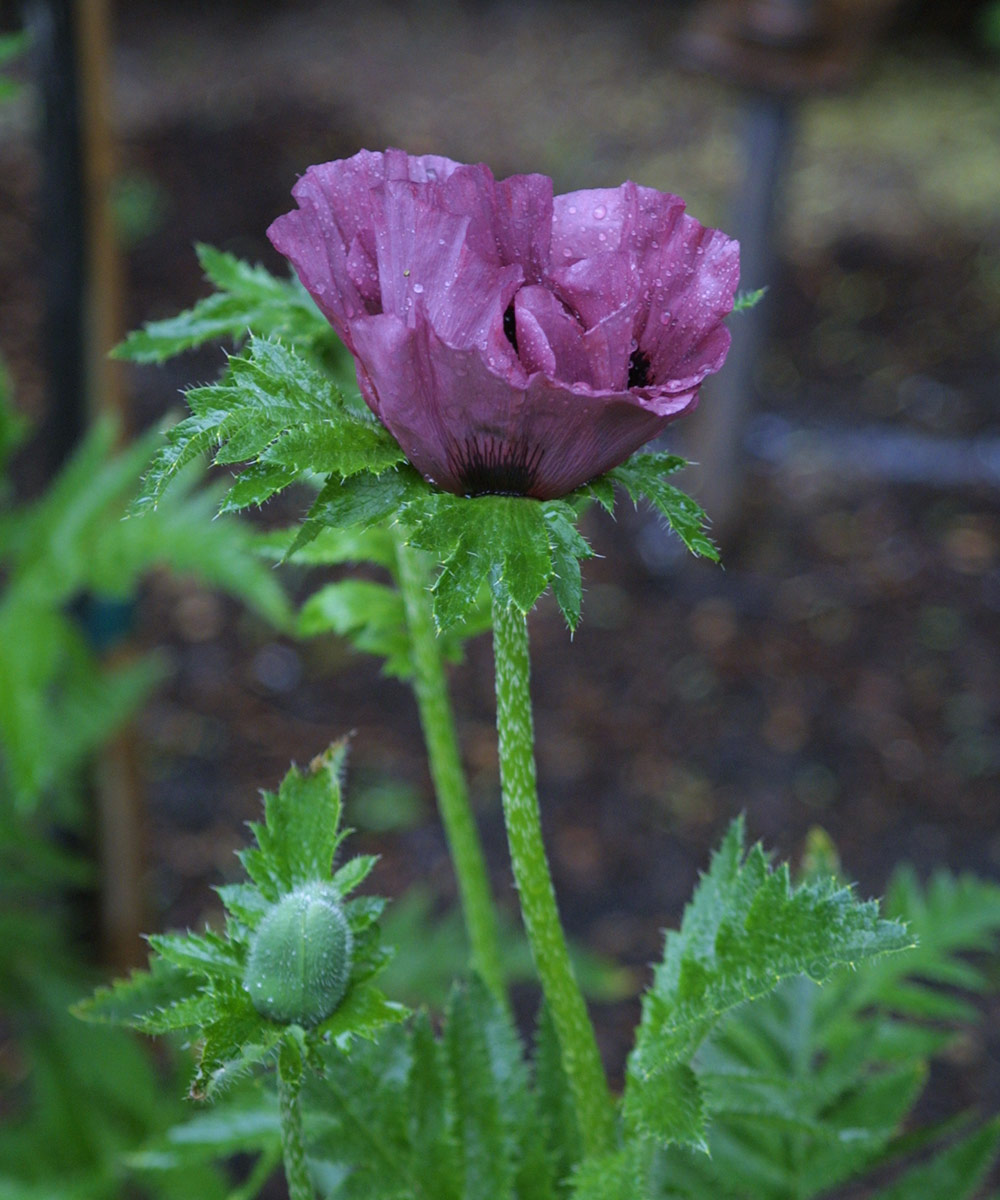
- ‘Helen Elizabeth’ is a robust variety with a strong salmon color.
- ‘Patty’s Plum’ is a rich purple with dark centers, making it a popular choice with garden designers.
- ‘May Queen’ is an old-fashioned variety with a delicate appearance, featuring orange-red, nodding flowers with ruffled edges.
If you provide the right conditions, you will be able to grow either annual or perennial poppies for years to come. You will know they are happy when they are seeding enthusiastically around your garden.
For more tips on how to grow classic cottage garden plants, check out:
And for more Northeast regional reports, click here.
Matt Mattus is the author of two books: Mastering the Art of Flower Gardening and Mastering the Art of Vegetable Gardening. He gardens in Worcester, Massachusetts.
Photos, unless otherwise noted: Matt Mattus





